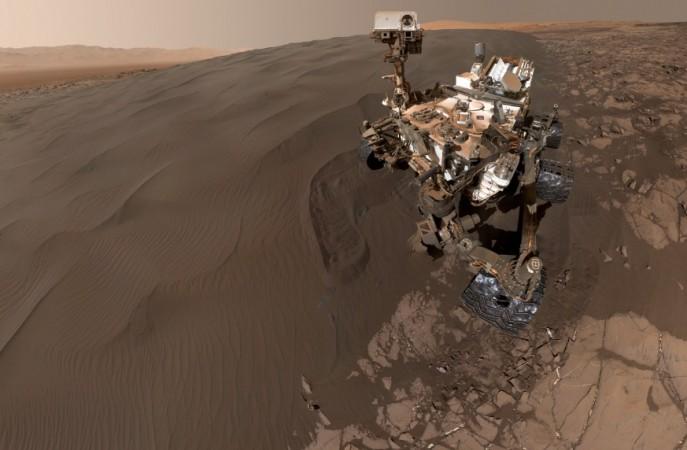
NASA's Mars Curiosity rover's main objective was to find if the red planet has chemical ingredients and environment suitable for any form of life. This objective has been accomplished with the mission unearthing the presence of organics all over the planet.
In the past, scientists have been maintaining that there is strong evidence of life on Mars and now NASA's Curiosity rover has confirmed it with its discovery of organic materials on the planet.
[READ: ESA rejuvenates its Mars mission; NASA captures Schiaparelli impact site]
Jennifer Eigenbrode, biogeochemist and geologist at NASA's Goddard Space Flight Center in Greenbelt, Maryland, said at the National Academy of Sciences workshop that she was convinced of the presence of organics are all over Mars, reported Seeker.
"They're all over the surface and they're probably through the rock record. What that means is something we'll have to talk about," said Eigenbrode.
"To me, this is the biggest take-home message. Four years ago, we would never have said this," she added.
Organics found in samples drilled out from rocks will boost the search for any existence of life in the past and encourage future endeavours. Eigenbrode said spotting of organic matter could be very important as it is opening the door to know "habitability potential" on the planet.
California Institute of Technology geologist John Grotzinger also expressed his excitement over the possibility of habitability on the red planet.
"What this is telling us is that that sedimentary basin is a chemical reactor, that those primary igneous minerals are being converted under different chemical circumstances into different minerals," said Grotzinger. "We're not sure what all this means, but it's pretty exciting for habitability."
More findings by NASA's Mars Curiosity rover is expected to be made known at the American Geophysical Union conference to be held this week.
(Source: Seeker)












